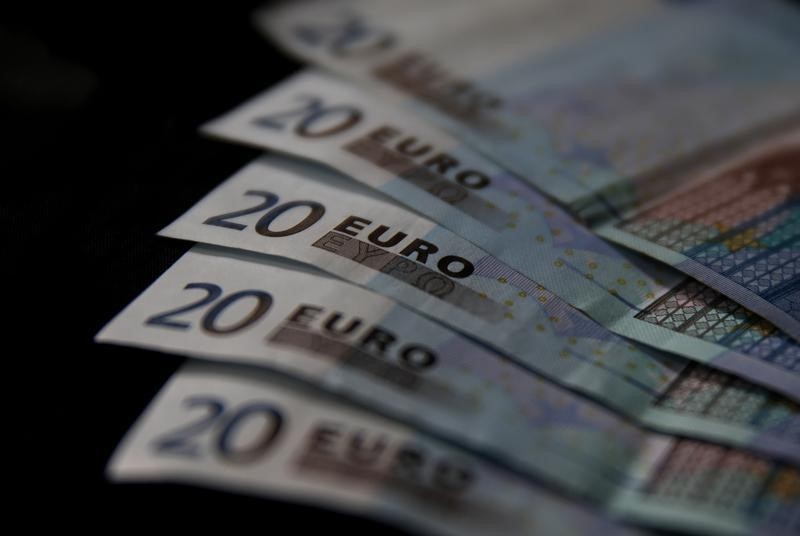Investing.com - The euro rose to session highs against the dollar on Tuesday after data showing that the economic recovery in the euro area gained traction last month, with private sector activity expanding at a faster than expected rate.
EUR/USD was up 0.39% to 1.0985 from around 1.0905 before the data.
Research group Markit said its composite purchasing managers index, which measures activity in the manufacturing and services sectors, rose to 46-month high of 54.1 in March from 53.3 in February.
A reading below 50.0 indicates activity is contracting, while a reading above that level indicates it is increasing.
The report showed that both new order growth and job creation rose at the fastest pace since mid-2007.
"The euro zone’s economic recovery gained further momentum in March, with the PMI hitting its highest for almost four years. The improvement provides welcome news to a region awaiting signs that the ECB’s quantitative easing is stimulating the real economy,” Chris Williamson, chief economist at Markit said.
Germany’s private sector expanded at the fastest rate in eight months, but growth in France’s private sector eased this month.
The euro was also higher against the pound, with EUR/GBP advancing 0.6% to 0.7362, while EUR/JPY was at 131.1.
Sterling slid lower after data earlier Tuesday showed that the annual rate of U.K. inflation slowed in February to the lowest level since records began as food and transport costs dropped.
The annual rate of consumer inflation fell to zero last month down from 0.3% in January, the Office for National Statistics said. Economists had expected a reading of 0.2%. It was the lowest level since records began in 1989.
The Bank of England expects inflation to fall below zero in the coming months and last week its chief economist said the bank should consider cutting rates if inflation threatens to fall further below its 2% target than forecast.
The dollar remained softer after Federal Reserve Vice Chair Stanley Fischer said Monday that it is "widely expected" to begin raising interest rates this year though the policy path remains uncertain.
The U.S. dollar index, which measures the greenback’s strength against a trade-weighted basket of six major currencies, was down 0.3% to 96.9. The index ended last week down 2.53%, the biggest weekly loss since October 2011.
